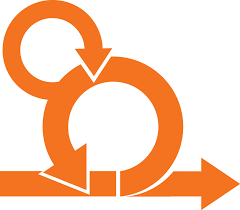We found 53 results that contain "time"
Posted on: #iteachmsu


Achieving work life balance is possible with effective time management. Learning time management tips will not only help you manage your time better but also boost personal productivity. With that said, here are some time management strategies you can try:
The 80/20 rule is a technique created by the Italian economist Vilfredo Pareto. It’s the idea that 20% of actions are responsible for 80% of outcomes. The goal of Pareto analysis is to help you prioritize tasks that are most effective at solving problems.

Posted by
over 1 year ago

Achieving work life balance is possible with effective time management. Learning time management tips will not only help you manage your time better but also boost personal productivity. With that said, here are some time management strategies you can try:
The 80/20 rule is a technique created by the Italian economist Vilfredo Pareto. It’s the idea that 20% of actions are responsible for 80% of outcomes. The goal of Pareto analysis is to help you prioritize tasks that are most effective at solving problems.
Disciplinary Content
Posted on: #iteachmsu



Posted by
about 2 years ago

Start by assessing your existing approach. How good are you at organizing your time so that you get the important things done well? Can you balance your time between different activities? And when you do make time to do something, are you able to focus – and get it finished
Assessing Learning
Posted on: #iteachmsu



Posted by
over 4 years ago

Beef ban is illogical
India is a country of 80 per cent Hindus and for most of them, the killing and consuming of cows is a sin on religious and traditional grounds. We have to respect that. It has been a tradition that has been upheld for thousands of years and respected by even non-Hindu kings as diverse as Babar, Hyder Ali and Ranjit Singh.
You can’t fight your identity. While you may say all that is in the past, that is not actually so. Even in 2017 most Hindus still do not believe in eating beef and this majority sentiment has to be respected. When India goes out of its way to placate the minorities, what is the logic of antagonising the majority?]
India is a country of 80 per cent Hindus and for most of them, the killing and consuming of cows is a sin on religious and traditional grounds. We have to respect that. It has been a tradition that has been upheld for thousands of years and respected by even non-Hindu kings as diverse as Babar, Hyder Ali and Ranjit Singh.
You can’t fight your identity. While you may say all that is in the past, that is not actually so. Even in 2017 most Hindus still do not believe in eating beef and this majority sentiment has to be respected. When India goes out of its way to placate the minorities, what is the logic of antagonising the majority?
India is a country of 80 per cent Hindus and for most of them, the killing and consuming of cows is a sin on religious and traditional grounds. We have to respect that. It has been a tradition that has been upheld for thousands of years and respected by even non-Hindu kings as diverse as Babar, Hyder Ali and Ranjit Singh.
You can’t fight your identity. While you may say all that is in the past, that is not actually so. Even in 2017 most Hindus still do not believe in eating beef and this majority sentiment has to be respected. When India goes out of its way to placate the minorities, what is the logic of antagonizing the majority?
India is a country of 80 per cent Hindus and for most of them, the killing and consuming of cows is a sin on religious and traditional grounds. We have to respect that. It has been a tradition that has been upheld for thousands of years and respected by even non-Hindu kings as diverse as Babar, Hyder Ali and Ranjit Singh.
You can’t fight your identity. While you may say all that is in the past, that is not actually so. Even in 2017 most Hindus still do not believe in eating beef and this majority sentiment has to be respected. When India goes out of its way to placate the minorities, what is the logic of antagonising the majority?]
India is a country of 80 per cent Hindus and for most of them, the killing and consuming of cows is a sin on religious and traditional grounds. We have to respect that. It has been a tradition that has been upheld for thousands of years and respected by even non-Hindu kings as diverse as Babar, Hyder Ali and Ranjit Singh.
You can’t fight your identity. While you may say all that is in the past, that is not actually so. Even in 2017 most Hindus still do not believe in eating beef and this majority sentiment has to be respected. When India goes out of its way to placate the minorities, what is the logic of antagonising the majority?
India is a country of 80 per cent Hindus and for most of them, the killing and consuming of cows is a sin on religious and traditional grounds. We have to respect that. It has been a tradition that has been upheld for thousands of years and respected by even non-Hindu kings as diverse as Babar, Hyder Ali and Ranjit Singh.
You can’t fight your identity. While you may say all that is in the past, that is not actually so. Even in 2017 most Hindus still do not believe in eating beef and this majority sentiment has to be respected. When India goes out of its way to placate the minorities, what is the logic of antagonizing the majority?
Posted on: #iteachmsu



Posted by
over 1 year ago

Posted on: #iteachmsu


Posted by
about 2 years ago
Human trafficking-considered modern-day slavery- is a global problem and is becoming increasingly prevalent across the World. Types and venues of trafficking in the United States Identifying victims of trafficking in healthcare settings Identifying warning signs of trafficking in healthcare settings for minors and adults Identifying resources for reporting suspected victims of human trafficking. The training requirement dictates a timeline beginning with the first renewal cycle for the period of 2017-2022. Let's talk more and research many areas, So join us by registering
The timeline for the training of individuals who are seeking initial nursing licensure - is 5 or more years of experience.
The timeline for the training of individuals who are seeking initial nursing licensure - is 5 or more years of experience.
Posted on: #iteachmsu


Posted by
over 4 years ago
Artificial Intelligence, also known as AI, and Data Science, has become the two most important sought after technologies in today's time. Many a time, people think of it as the same thing, but they are not the same thing in reality. Artificial Intelligence is used in the field of Data Science for its operations
Posted on: #iteachmsu



Posted by
almost 2 years ago

Stage 1: Planning and Requirement Analysis
Requirement analysis is the most important and fundamental stage in SDLC. It is performed by the senior members of the team with inputs from the customer, the sales department, market surveys and domain experts in the industry. This information is then used to plan the basic project approach and to conduct product feasibility study in the economical, operational and technical areas.
Planning for the quality assurance requirements and identification of the risks associated with the project is also done in the planning stage. The outcome of the technical feasibility study is to define the various technical approaches that can be followed to implement the project successfully with minimum risks.
Stage 2: Defining Requirements
Once the requirement analysis is done the next step is to clearly define and document the product requirements and get them approved from the customer or the market analysts. This is done through an SRS (Software Requirement Specification) document which consists of all the product requirements to be designed and developed during the project life cycle.
Stage 3: Designing the Product Architecture
SRS is the reference for product architects to come out with the best architecture for the product to be developed. Based on the requirements specified in SRS, usually more than one design approach for the product architecture is proposed and documented in a DDS - Design Document Specification.
This DDS is reviewed by all the important stakeholders and based on various parameters as risk assessment, product robustness, design modularity, budget and time constraints, the best design approach is selected for the product.
A design approach clearly defines all the architectural modules of the product along with its communication and data flow representation with the external and third party modules (if any). The internal design of all the modules of the proposed architecture should be clearly defined with the minutest of the details in DDS.
Stage 4: Building or Developing the Product
In this stage of SDLC the actual development starts and the product is built. The programming code is generated as per DDS during this stage. If the design is performed in a detailed and organized manner, code generation can be accomplished without much hassle.
Developers must follow the coding guidelines defined by their organization and programming tools like compilers, interpreters, debuggers, etc. are used to generate the code. Different high level programming languages such as C, C++, Pascal, Java and PHP are used for coding. The programming language is chosen with respect to the type of software being developed.
Stage 5: Testing the Product
This stage is usually a subset of all the stages as in the modern SDLC models, the testing activities are mostly involved in all the stages of SDLC. However, this stage refers to the testing only stage of the product where product defects are reported, tracked, fixed and retested, until the product reaches the quality standards defined in the SRS.
Stage 6: Deployment in the Market and Maintenance
Once the product is tested and ready to be deployed it is released formally in the appropriate market. Sometimes product deployment happens in stages as per the business strategy of that organization. The product may first be released in a limited segment and tested in the real business environment (UAT- User acceptance testing).
Then based on the feedback, the product may be released as it is or with suggested enhancements in the targeting market segment. After the product is released in the market, its maintenance is done for the existing customer base.
Requirement analysis is the most important and fundamental stage in SDLC. It is performed by the senior members of the team with inputs from the customer, the sales department, market surveys and domain experts in the industry. This information is then used to plan the basic project approach and to conduct product feasibility study in the economical, operational and technical areas.
Planning for the quality assurance requirements and identification of the risks associated with the project is also done in the planning stage. The outcome of the technical feasibility study is to define the various technical approaches that can be followed to implement the project successfully with minimum risks.
Stage 2: Defining Requirements
Once the requirement analysis is done the next step is to clearly define and document the product requirements and get them approved from the customer or the market analysts. This is done through an SRS (Software Requirement Specification) document which consists of all the product requirements to be designed and developed during the project life cycle.
Stage 3: Designing the Product Architecture
SRS is the reference for product architects to come out with the best architecture for the product to be developed. Based on the requirements specified in SRS, usually more than one design approach for the product architecture is proposed and documented in a DDS - Design Document Specification.
This DDS is reviewed by all the important stakeholders and based on various parameters as risk assessment, product robustness, design modularity, budget and time constraints, the best design approach is selected for the product.
A design approach clearly defines all the architectural modules of the product along with its communication and data flow representation with the external and third party modules (if any). The internal design of all the modules of the proposed architecture should be clearly defined with the minutest of the details in DDS.
Stage 4: Building or Developing the Product
In this stage of SDLC the actual development starts and the product is built. The programming code is generated as per DDS during this stage. If the design is performed in a detailed and organized manner, code generation can be accomplished without much hassle.
Developers must follow the coding guidelines defined by their organization and programming tools like compilers, interpreters, debuggers, etc. are used to generate the code. Different high level programming languages such as C, C++, Pascal, Java and PHP are used for coding. The programming language is chosen with respect to the type of software being developed.
Stage 5: Testing the Product
This stage is usually a subset of all the stages as in the modern SDLC models, the testing activities are mostly involved in all the stages of SDLC. However, this stage refers to the testing only stage of the product where product defects are reported, tracked, fixed and retested, until the product reaches the quality standards defined in the SRS.
Stage 6: Deployment in the Market and Maintenance
Once the product is tested and ready to be deployed it is released formally in the appropriate market. Sometimes product deployment happens in stages as per the business strategy of that organization. The product may first be released in a limited segment and tested in the real business environment (UAT- User acceptance testing).
Then based on the feedback, the product may be released as it is or with suggested enhancements in the targeting market segment. After the product is released in the market, its maintenance is done for the existing customer base.
Disciplinary Content
Posted on: #iteachmsu



Posted by
over 1 year ago

Human trafficking-considered modern-day slavery- is a global problem and is becoming increasingly prevalent across the World. Types and venues of trafficking in the United States Identifying victims of trafficking in healthcare settings Identifying warning signs of trafficking in healthcare settings for minors and adults Identifying resources for reporting suspected victims of human trafficking. The training requirement dictates a timeline beginning with the first renewal cycle for the period of 2017-2022. Let's talk more and research many areas, So join us by registering
The timeline for the training of individuals who are seeking initial nursing licensure - is 5 or more years of experience.
The timeline for the training of individuals who are seeking initial nursing licensure - is 5 or more years of experience.
Disciplinary Content
